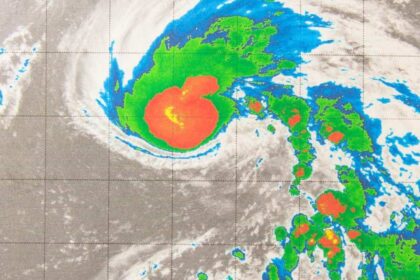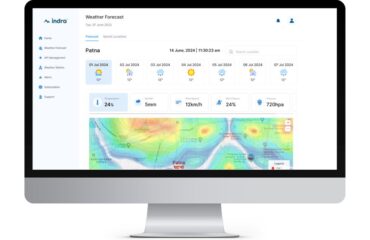
In today’s increasingly unpredictable climate, large enterprises across industries such as insurance, energy, and finance face the mounting challenge of managing weather-related risks. Extreme weather events, unexpected shifts in climate patterns, and localized weather anomalies can disrupt operations, increase costs, and impact profitability.
To stay competitive, enterprises need more than general weather forecasts. They require precise, hyper-local weather forecasting that provides accurate data to manage risk effectively, optimize operations, and reduce costs. In this blog post, we’ll explore the business case for adopting high-resolution weather data and how it can drive better decision-making for enterprises operating at scale.
The Importance of Hyper-Local Weather Forecasting
Traditional weather services often provide general forecasts that cover wide geographical areas, offering limited precision for businesses operating in multiple regions or locations. For large enterprises, this lack of granular data can result in inaccurate decision-making, leading to operational disruptions or missed opportunities for cost savings.
This is where hyper-local weather forecasting comes in. By delivering weather data at a high resolution—often within a 3km radius—hyper-local forecasts provide a much more detailed picture of current and future weather conditions. With Indra’s Weather Model, businesses gain access to hyper-local weather data that improves forecast accuracy, allowing for more informed decisions and a proactive approach to managing risks.
Managing Climate Risk with Accurate Weather Data
For industries like insurance, climate risk is a growing concern. Companies need to understand how localized weather patterns affect their portfolios, and broad, regional forecasts may overlook the nuances of a particular area. Accurate weather forecasting enables insurers to assess risk more precisely and offer customized solutions to their clients.
In the energy sector, hyper-local weather data allows for more efficient management of renewable energy assets like wind and solar farms. By predicting localized weather changes—such as wind speeds or cloud cover—energy providers can optimize energy output, improve grid management, and reduce operational costs.
The finance sector also benefits from accurate, real-time weather data, particularly when assessing investments in climate-sensitive industries like agriculture and infrastructure. By understanding the potential impacts of weather and climate risk, financial institutions can make more informed lending and investment decisions.
Reducing Operational Costs with Accurate Forecasting
Operational efficiency is another key benefit of adopting hyper-local weather forecasting. By having access to precise weather data, companies can optimize their supply chains, adjust staffing levels based on predicted weather conditions, and improve resource allocation across multiple locations.
For example, mistEO, a company specializing in livestock management, used Indra’s hyper-local weather forecaststo minimize losses during extreme weather events. By receiving accurate, localized data, mistEO could take preventive action—such as sheltering animals and adjusting feed schedules—well in advance of storms or heatwaves. This proactive approach helped reduce operational costs and safeguard the company’s bottom line.
Other industries, such as retail and logistics, can also benefit from localized weather data by improving inventory management and minimizing weather-related disruptions to transportation networks.
Seamless Integration with Weather Data APIs
One of the primary concerns for large enterprises when adopting new technologies is ensuring that they integrate seamlessly with existing systems. Indra’s weather data API makes it easy for businesses to pull hyper-local weather data directly into their platforms, whether it’s for risk management, operational planning, or customer-facing applications.
Our API offers a customizable, flexible solution that scales as your business grows, ensuring that you can access the right weather data at the right time, no matter the complexity of your operations.
The Bottom Line: Why Hyper-Local Weather Forecasting Matters
At its core, hyper-local weather forecasting is about delivering actionable data that businesses can trust. Whether you’re managing climate risk in insurance, optimizing energy production, or reducing operational costs in logistics, having access to accurate, high-resolution weather data allows you to make informed decisions that benefit your bottom line.
With Indra’s Weather Model, you can stay ahead of weather-related risks, optimize operations, and save on unnecessary costs. Our hyper-local forecasts, delivered through our user-friendly weather data API, provide the precision and reliability that large enterprises need to thrive in today’s fast-changing climate landscape.













